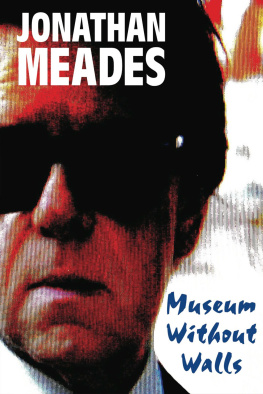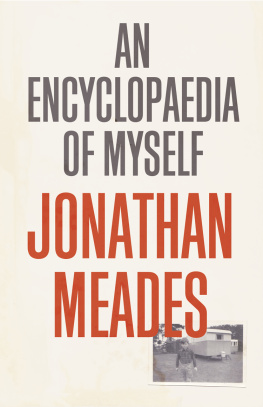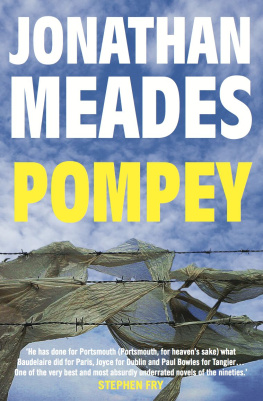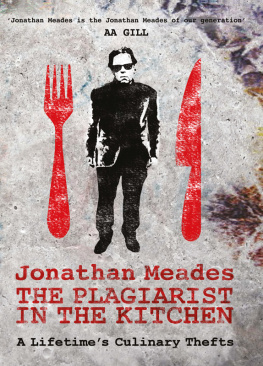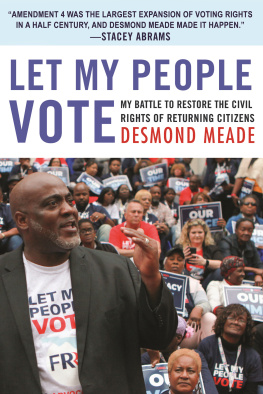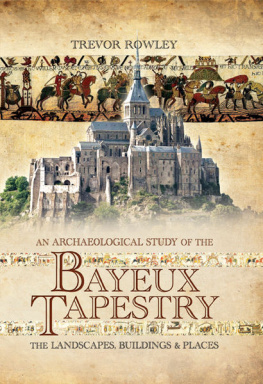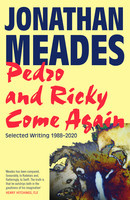Museum Without Walls
Jonathan Meades
To Robin Coates and his parents
introduction
We are surrounded by the greatest of free shows. Places. Most of them made by man, remade by man. Deserted streets, seething boulevards, teeming beaches, empty steppes, black reservoirs, fields of agricultural scrap, cute villages and disappearing points which have an unparalleled capacity to promote hope (I am thinking of the aspect north up rue Paradis in Marseille).
This book is the product of an obsessive preoccupation with places, mainly British places, with their ingredients, with how and why they were made, with their power over us, with their capacity to illumine the societies that inhabit them and, above all, with the ideas that they foment.
Much of it evidently concerns buildings, the gaps between them, their serendipitous conjunctions and grotesque collisions. High architecture comes into it, but so too do inspired bricolage, plutocratic boasts, arid estates, mighty sprawl. The catastrophic cock-ups of grandiloquent visionaries are as grimly appealing as the imaginatively bereft efforts of volume builders. There is an emphasis on buildings which are overlooked or which, should they be noticed, are unthinkingly despised, just as there is on topographies which are routinely neglected: the banal is a thing of joy. Everything is fantastical if you stare at it for long enough, everything is interesting. There is no such thing as a boring place.
These lectures, essays, polemics, squibs and telly scripts are intended to entertain, to instruct, to inform and to question the orthodoxies of the architectural, heritage and construction industries, to draw attention to the rich oddness of what we take for granted. But before that they are written because I want to read them, to watch them. If that sounds selfish and immodest so be it. But it is surely more honest to write for an audience of one whose peccadillos and limitations I understand than for an inchoate mass of opinionated individuals whose multiple and conflicting tastes I can only guess at and which I have, above everything else, to be indifferent to. Rgis Jauffret got it right when he said that he was disgusted by writers who think of their readers.
This is a pretty basic point which the cretinocracy that has seized control of television cannot begin to understand. There is much that it cannot understand: the unknown, alien opinions, intelligence. And what it cannot understand it seeks to quash. One becomes inured to censorship by dolts: mocking the INLA can cause the impressionable to take up terrorism; Muslims must be treated with a respect that is not accorded to other delusionists (who are less sensitive, less heavily armed); the sight of dead rabbits may offend who? Living rabbits? I am inured, too, to being accused of bigotry and bias by persons who are blind to their own bigotry and bias, which they perceive as unexceptionable opinions or even The Truth. The scripts collected here include a number of passages deemed unfit for human consumption as well as the omission of some half-witted health warnings to the effect that my observations do not concur with the BBC s pense unique . That organisation is, incidentally, waiting for the French government to come round to its way of thinking.
In the name of populism or accessibility the cretinocracy has all but destroyed a medium which was for thirty or so years an instrument of beneficent cultural diffusion. There exists among telly executives and managers a conviction that everyone is as crass as they are, that everyone is preoccupied by football and its moronic overpaid pundits. Still, I cant say I wasnt warned. When I started to do telly in the mid-80s Richard Williams, now a celebrated sports writer, then features editor of The Times , told me: Youre going to meet a lot of very stupid people. And so I have. But the directors and crews with whom I have spent years on the road in often questionable hotels are anything but stupid. Some of them are among my closest friends. One has to conclude that television is a medium in which it is the scum which rises inexorably to the top.
A priori the subjects here are: the cross-party tradition of governmental submission to the construction industry; architectural epiphanies Marsh Court, Arc-et-Senans, lUnit dHabitations roof; what to do with Anglican churches; Hadid and Legorreta; the folly of pedestrianisation; the hierarchy of land- and cityscapes; the hierarchy of building types; Birminghams beauty; Bremen and the Hanseatic League; the futile vanity of landmark buildings; why buildings are better unfinished; the congruence of the 1860s and 1960s; Letchworths dreary legacy; the chasm between Hitlers architecture and Stalins; the regeneration gravy train; the picturesque as an English disease; shopping malls; the Isle of Sheppey; the Isle of Rust; the Dome and domes; post-war churches; Pevsner and Nairn.
Theyre what I thought I was writing about. Revisiting them it is evident that I suffer recurrent devotions and, equally, a gamut of seldom submerged antipathies. Beaverbrook observed that his father taught him to hate, to hate. I enjoyed no such tuition. Ive had to teach myself. It comes easily enough when one is presented with such objects as good taste, Georgian timidity and the nasty bland synthetic-modern legacy of New Labour, made in the image of the grinning Tartuffish war criminal himself but the happy Christmas Day will come when our Christian bomber and his gurning hag magically mutate into the Ceaucescus of Connaught Square. (The house has a basement.)
I guess that willing victims of Abrahamic systems of gross superstition may be offended by my mild mockery but these poor dupes surely have their faith and their dietary idiocies and their intolerant belligerent paedophiliac prophet to fortify them.
Such systems come and go. Two thousand years is not a long time: after two thousand years in the grave a Sicilian hasnt even decided on the form his revenge will take. Physical structures outlast dangerously frivolous religious pathologies. Whatever Carnac, Callanish, Stonehenge stood for is forgotten. These sites may have had nothing anyway to do with cosy supernaturalism or worship of coarse fictions. Their material survives, just as words remain when shorn of didactic nagging. The valley of the shadow of death is a potent construction which signifies to me a specific place rather than a metaphor for our apprisal of mortality (and gods playful tendency to visit that state on us). One case for architecture rather than mere building, for art rather than utility, is that a structures purpose is ultimately provisional: the mosque is turned and becomes a cathedral, the warehouse is transformed into a skating rink, the old abattoir is now a boathouse. What remains is creativity, resourcefulness, the impetus to make.
It is the fruit of that impetus which has delighted and fascinated and even succoured me for as many years as I have been sentient. No doubt the fact that the only object Ive ever managed to carpenter was a wrist-watch stand ( BRG , 1959) inflates my admiration for those who work in three dimensions, who work virtuously, energetically, aggressively: Vanbrugh and Pilkington, Butterfield and Gordon, and, above all, Anon and Unattrib, whose oeuvre is vast, diverse and massively appreciated. Their names are forgotten but their shacks and leets, their lean-tos and footbridges will live forever more. For a while yet anyway.
FREE SHOW
Just Looking
hamas & kibbutz
Ive spent a lifetime writing about place as its now called, with neither a definite nor an indefinite article writing about it in different media and in different ways: polemically, analytically, essayistically, fictively. I have also written about and filmed architecture and buildings which are no more than components of place: the distinction between what is architecture and what is building strikes me, incidentally, as absolutely bogus.

